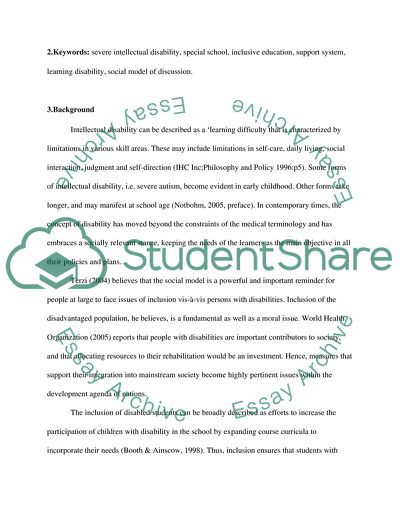Cite this document
(Severe Intellectual Disability Case Study Example | Topics and Well Written Essays - 2500 words - 1, n.d.)
Severe Intellectual Disability Case Study Example | Topics and Well Written Essays - 2500 words - 1. Retrieved from https://studentshare.org/health-sciences-medicine/1749735-factors-affecting-learners-behaviour-in-gauteng-special-schools
Severe Intellectual Disability Case Study Example | Topics and Well Written Essays - 2500 words - 1. Retrieved from https://studentshare.org/health-sciences-medicine/1749735-factors-affecting-learners-behaviour-in-gauteng-special-schools
(Severe Intellectual Disability Case Study Example | Topics and Well Written Essays - 2500 Words - 1)
Severe Intellectual Disability Case Study Example | Topics and Well Written Essays - 2500 Words - 1. https://studentshare.org/health-sciences-medicine/1749735-factors-affecting-learners-behaviour-in-gauteng-special-schools.
Severe Intellectual Disability Case Study Example | Topics and Well Written Essays - 2500 Words - 1. https://studentshare.org/health-sciences-medicine/1749735-factors-affecting-learners-behaviour-in-gauteng-special-schools.
“Severe Intellectual Disability Case Study Example | Topics and Well Written Essays - 2500 Words - 1”, n.d. https://studentshare.org/health-sciences-medicine/1749735-factors-affecting-learners-behaviour-in-gauteng-special-schools.


